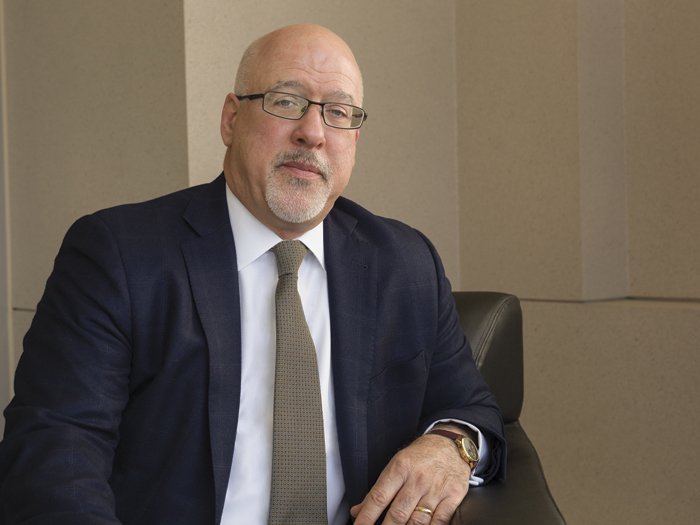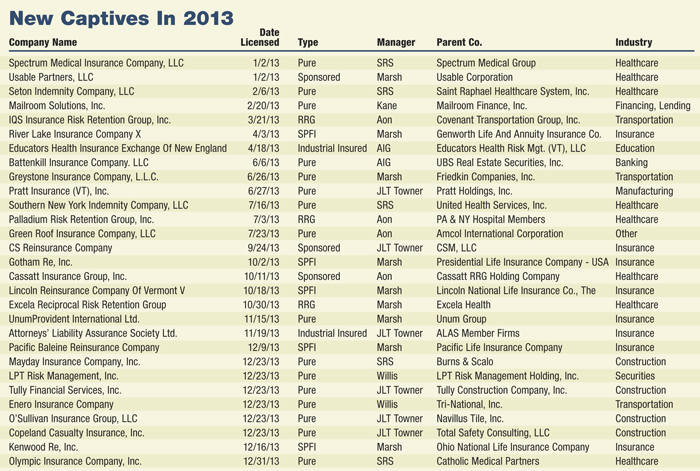Vermont Report: A Milestone
Hospital Group Hits Milestone

Back in 1991, a group of Pennsylvania hospitals dipped their toes into the water of captives. That water happened to be offshore. Their other insurance option was the “turmoil” of the traditional market. So they decided to dive in with a class-2 insurer called Cassatt Insurance Co. Ltd. It provided members with excess professional and general liability insurance.
The group thrived — enough to encourage the formation of another captive in 1997. This time, Cassatt planted its flag firmly onshore, in Vermont, with a risk retention group (RRG) called Cassatt Risk Retention Group Inc. Coverage was for the primary level, set beneath what was then called the Pennsylvania CAT Fund, which became the Pennsylvania MCare Fund in 2002.
(Essentially, MCare, or Medical Care Availability and Reduction of Error, guarantees “reasonable compensation,” according to the Commonwealth, for persons injured due to medical negligence by paying from the fund for claims in excess of primary insurance coverage.)
The RRG today has five shareholders, nine hospitals and more than 1,200 physicians insured.
The next big step in the group’s evolution came in 2006, when Cassatt RRG Holding Co. gained a far greater role in the everyday operations of the captives and their members. The holding company assumed responsibility for claims, risk management, underwriting and finance.
“It is really a service organization to the membership,” said Eric W. Dethlefs, president and chief executive officer of the Malvern, Pa.-based holding company.
What the increased role of the holding company — and the overall development of Cassatt — demonstrates is truly an innovative progression; the ability to anticipate trends as they emerge. It’s a trait particularly handy for health care organizations, especially as of late, when issues appear to be rising faster than most organizations can understand, let alone manage.
Take the most recent examples of Cassatt’s growth. In 2012, Cassatt RRG Holding Co. launched the Cassatt Patient Safety Organization. This past October, it formed Cassatt Insurance Group Inc. — coincidentally, Vermont’s 1,000th captive formation. Both demonstrate Cassatt’s handle on 21st century health care exposures and strategic imperatives.
A Captive for Convenience
The Cassatt Insurance Group is a sponsored captive — or in other common parlance, a segregated cell captive. Vermont’s 1,000th captive is designed, Dethlefs explained, to provide insurance coverage flexibility for members as they merge and form affiliations with other hospital systems in the coming months and years, as they address the Affordable Care Act and other challenges. Many health care systems are scrambling to find such partners, Dethlefs said. (See related article Managing Change)
“The founding members believed then and continue to believe today that the sharing of risk and the sharing of best practices across the membership is something very important and one of the reasons they formed a group captive.” —Eric W. Dethlefs, president and CEO, Cassatt RRG Holding Co.
Cassatt’s sponsored captive will provide a flexible solution for the health care organizations that partner with Cassatt members. Dethlefs described the concept as each cell being similar to a new spoke off the sponsored captive’s wheel. The RRG is one established spoke. If new partners want the claims, patient safety and other benefits of Cassatt involvement, yet aren’t prepared to share in the other members’ liabilities as they would in the RRG, they can form their own cell, or a new spoke. One key benefit of segregated cell captives is that each cell’s liability is walled off.
Roughly six months into the new captive, Dethlefs said, talks are underway with several health groups.
It’s an attractive model for health care organizations, according to someone who has seen plenty of captive business models (not all 1,000 of Vermont’s, but plenty).
“It is a neat process for them to expand their services to other hospitals,” said David F. Provost, deputy commissioner in Vermont’s Captive Insurance Division. “The result is going to be better patient care.”
“The regulators in Vermont clearly understand the needs of our member hospitals, and this new company will help us to grow and to continue to provide the members and their patients with the benefits of Cassatt’s success,” said Gerald Miller, chairman of the Cassatt board of directors.
A Captive for Care
Cassatt member hospitals have enjoyed a surge of benefits from the aforementioned Cassatt Patient Safety Organization (CPSO), which has been approved by the Department of Health and Human Services’ Agency for Healthcare Research and Quality.
“It’s not a one-and-done kind of thing. It’s continual,” Dethlefs said.
The CPSO can, for example, conduct risk assessments. It brings in experts in a given medical field that represents a high degree of liability exposure — say, obstetrics or surgery — and works with them to analyze the current practice and delivery of care. They learn what they are doing well, and where they could improve.
 Another function of the patient safety organization is protected knowledge sharing. Chief medical officers, chiefs of obstetrics and other leaders from member hospitals can gather around a meeting room — a “safe table,” as designated by the federal government — and essentially compare patient safety notes.
Another function of the patient safety organization is protected knowledge sharing. Chief medical officers, chiefs of obstetrics and other leaders from member hospitals can gather around a meeting room — a “safe table,” as designated by the federal government — and essentially compare patient safety notes.
Dethlefs called the patient safety organization “just as important, or maybe even more important” than the insurance underwritten by the captives.
“The founding members believed then and continue to believe today that the sharing of risk and the sharing of best practices across the membership is something very important and one of the reasons they formed a group captive,” Dethlefs said.
Indeed, the same rationale went into leveraging the holding company for in-house claims and risk management in 2006. The holding company now has four case handlers and one director making up the claims staff, representing more than 125 years of collective professional liability experience, he said.
They investigate each case, evaluate liability and damages, and make recommendations on whether to settle or litigate. The claims personnel are capable of following a claim from the initial incident to the case disposition, working in conjunction with member hospital staff and in-house counsel. They will even attend trials. The results of hands-on claims management pay for themselves.
“We have a very, very good, solid record in terms of favorable loss development,” Dethlefs said.
Cassatt’s holding company also employs a patient safety staff consisting of an administrative director, a medical director and other staff members.
All of this investment was a conscious decision that Cassatt could be capable of managing its members’ exposure better than third-party vendors.
“We had the belief that if we internalized these functions of claims, risk, finance and underwriting, and held people accountable, results would be better,” Dethlefs said.
A Captive for Copying?
Cassatt’s growth — particularly the patient safety organization and the sponsored captive — are not mere symptoms of ACA implementation, though the dynamic nature of health care risk today has a lot to do with it.
“Changes in health care — and particularly in the economics of health care (including the advent of the Affordable Care Act and other legislation and initiatives) — require hospitals to find better, more efficient ways to deliver consistent, high-quality care,” said Laurence M. Merlis, president and CEO of member Abington Health.
“Cassatt is an indispensable partner for Abington as it addresses both challenges: cost and quality. Through its first-class patient safety and risk management work and innovative solutions to insuring our risks, Cassatt plays a major role in ensuring that Abington remains a center of excellence in health care in the Philadelphia region,” he said.
Collective risk management has been a long-term view of the member companies.
“Cassatt was created more than 20 years ago in response to the member hospitals’ need for a high-quality, cost-effective liability insurance solution,” said Miller, Cassatt’s board chairman. “The members’ continued attention to and investment in Cassatt has resulted not only in what we believe is a superior insurance program but also in Cassatt’s capability to provide first-class patient safety and risk management services to the member hospitals.”
Developments since then have been improvements on that theme and responses to current trends.
Although Cassatt’s model may well be considered innovative and worthy of imitation by others facing the current turbulence — we’ll leave that to the experts to determine — Dethlefs doesn’t think it’s particularly innovative. “I think it’s getting back to the basics of doing things correctly and holding folks accountable,” he said.










